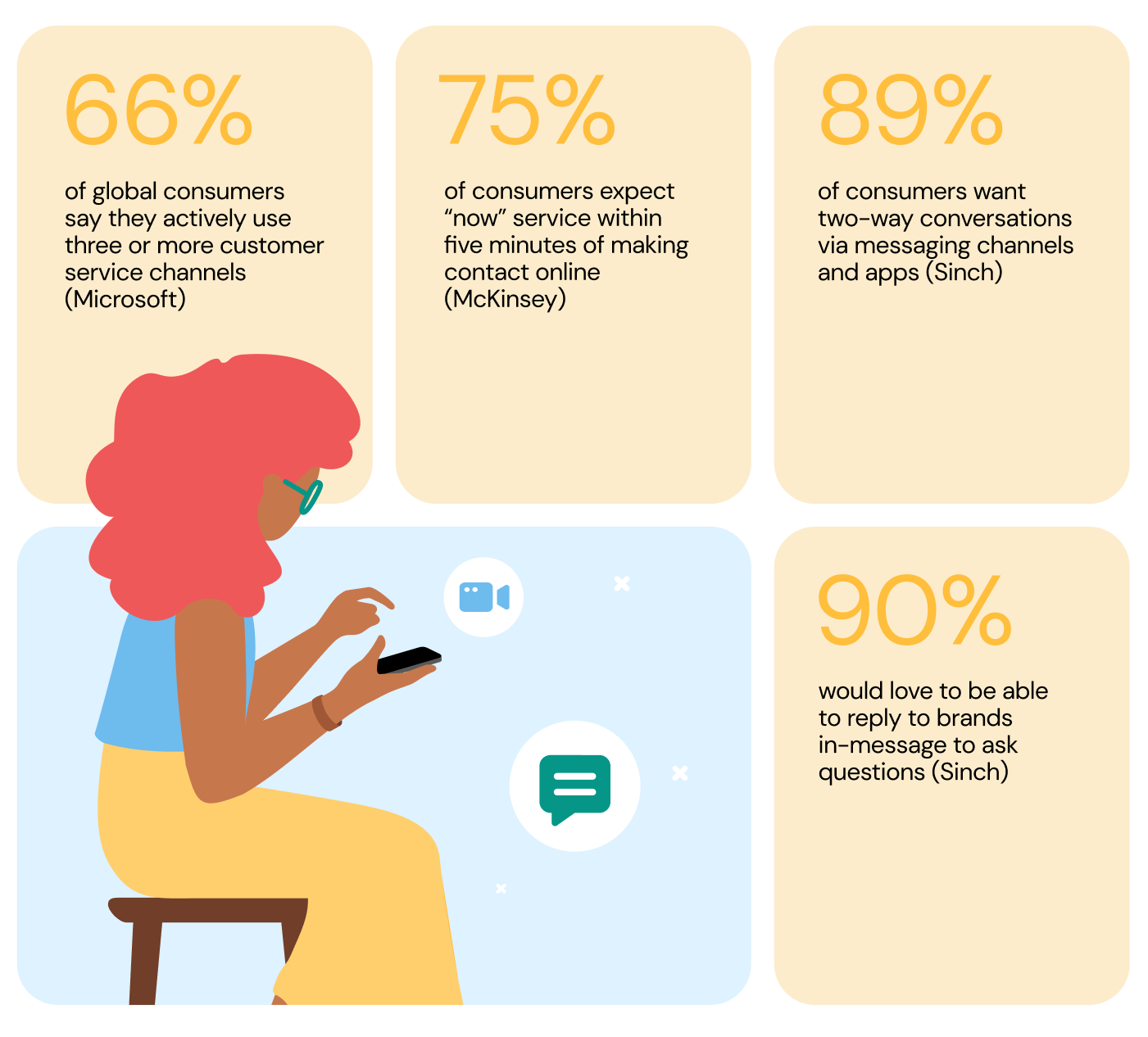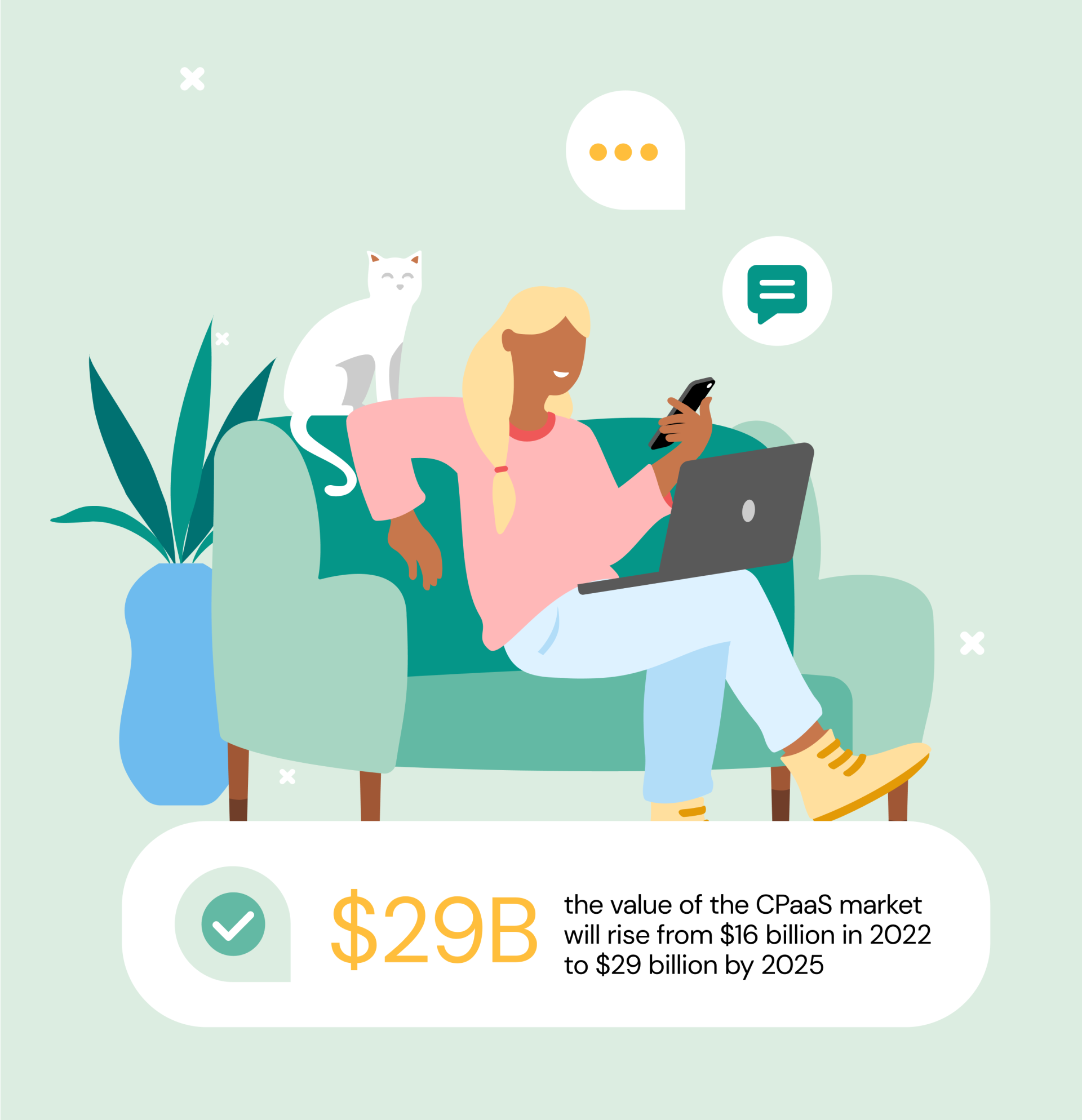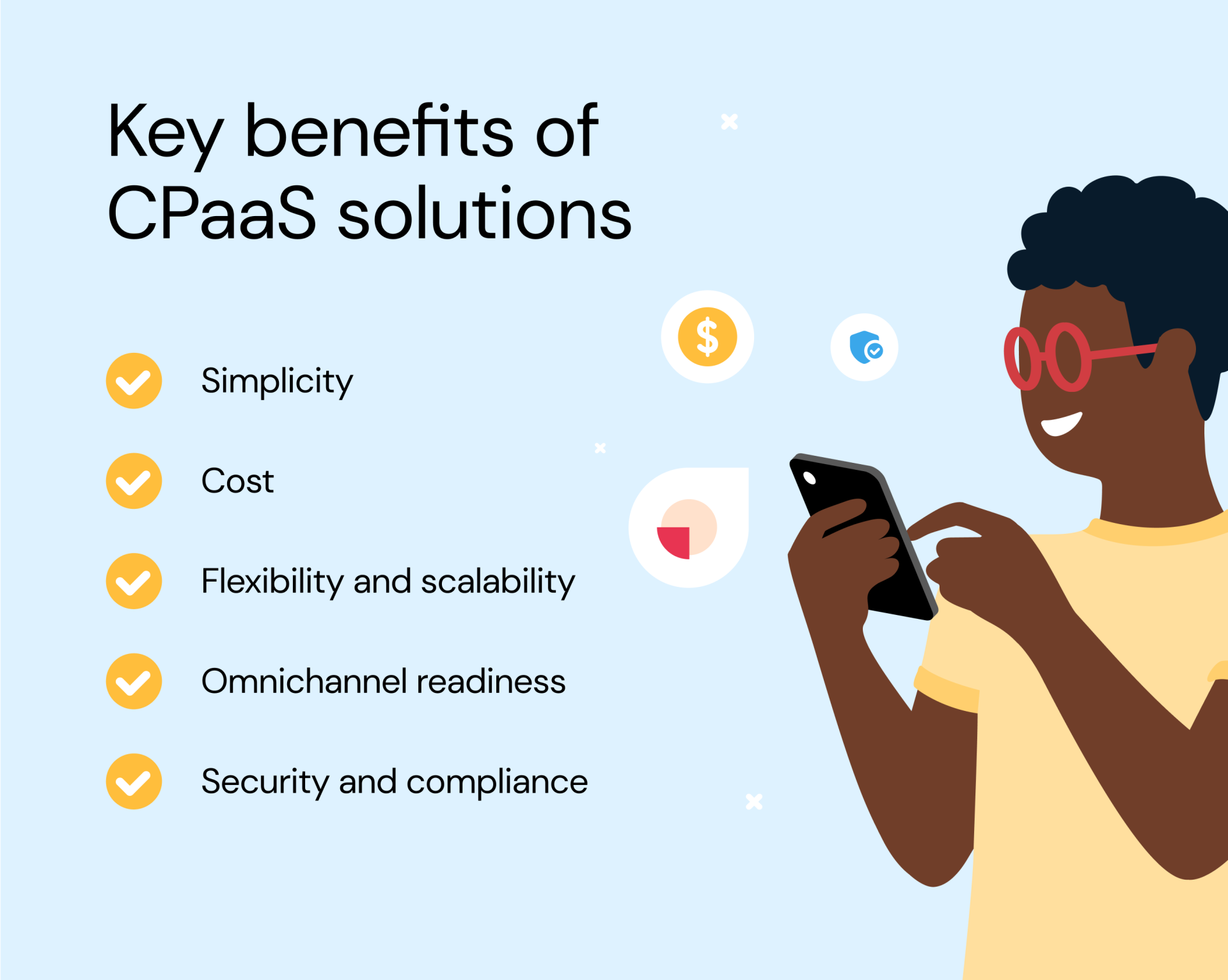Insights, Products
What is CPaaS? Benefits, use cases, and tips for choosing your CPaaS provider

Insights, Products

In 2023, the concept of digital transformation might sound like a thing of the past, but the truth is, it’s a never-ending process of learning and adjusting digital resources to shifting customer expectations, business needs, and new technology developments.
From conversational AI to messaging channels and social apps, customer engagement tools represent an ever-growing part of companies’ spending on digital infrastructure, and it’s no wonder why. Consumers nowadays want to interact with brands in real time, on their own terms, on the channels that suit them.

So how can businesses enable always-on, two-way customer engagement, on the right channels – and do so at scale? That’s where technology like CPaaS (Communications Platform as a Service) comes in handy.
Read on to understand how CPaaS works, how businesses can make the most of CPaaS solutions, and how to choose the right partner.
CPaaS (Communications Platform as a Service) is a cloud-based platform allowing businesses to easily integrate real-time communication capabilities into their existing applications and legacy platforms through APIs, without having to build or manage any complex backend infrastructure.
The communications APIs CPaaS providers typically offer include:
Most CPaaS providers also offer software development kits (SDKs), documentation, and support to make integration quick and easy for developers.
Many CPaaS vendors have also developed low-code and no-code applications for conversational AI, customer service, marketing, and more, allowing non-technical users to add real-time communications capabilities into their workflows without advanced coding skills.
But what really sets one CPaaS vendor apart from another isn’t really what they do, it’s how they do it — how they make sure communications happen. In other words, connectivity is what it’s all about, and not all CPaaS vendors are created equal.
Businesses in need of scale, reliability, and quality might want to consider a CPaaS provider with end-to-end control over its connectivity infrastructure and direct connections to operators, channel providers, and postmasters — more on this later.

Long gone are the days when people were OK running from store to store to find what they need, holding in a call center queue forever, or emailing customer support and waiting days to get questions answered.
Fortunately, gone too are the days when businesses had to spend a lot of time, effort, and money creating and evolving complex legacy communications infrastructure or stitching together countless solutions to accommodate customers’ channel preferences and engage with them reliably, no matter where they are or what telecom provider they use.
The CPaaS market has shown dizzying growth over the last few years and continues to grow, helping brands keep up with shifting customer engagement needs.
According to new research from Juniper, the value of the CPaaS market will rise from $16 billion in 2022 to $29 billion by 2025.
On a similar note, in its Market Guide for Communications Platform as a Service (September 2022), Gartner predicts that “by 2026, 90% of global enterprises will leverage CPaaS as a strategic IT skill set to maintain digital competency, up from 30% in 2022.”
So, what exactly makes CPaaS such a game changer for businesses? Let’s examine the main benefits of CPaaS solutions.

With CPaaS, no need to manage your own communications infrastructure. No need for an entire IT department to get up and running either. Using the provider’s APIs and SDKs, developers can quickly and easily integrate real-time communications features into their applications and systems.
CPaaS solutions eliminate the costs associated with evolving legacy systems. Instead, businesses can build the exact setup they need and only pay for the features they use. And because CPaaS vendors manage high volumes of communications, they can derive better deals from telecoms and channel providers and pass those savings on to you!
Communications APIs make it easy for businesses to customize, scale up, and upgrade their comms stack with new channels, features, and capabilities. Plus, global connectivity means businesses can easily expand their reach to new markets and audiences.
Communicating with customers across channels can be overwhelming. CPaaS providers solve the complexity of omnichannel communications with tools that bring multiple channels under one roof. The result is a consistent, more valuable experience for customers across their journey, no matter the channels they use.
With digital fraud on the rise, trust and security have become the building blocks of customer engagement and loyalty. The right CPaaS provider will ensure all your communications are secure and compliant with data privacy rules and regulations, no matter where your audience is.
Most CPaaS providers also offer multi-factor authentication solutions to help businesses secure sign-ups and logins and keep customers safe.
There’s no doubt about it: Meaningful, seamless customer engagement is the key to better customer experiences, long-term customer loyalty, and sustainable growth — and CPaaS is how brands can make it happen.
Here are some examples of how businesses can leverage CPaaS solutions to deliver value and maximize opportunities throughout the customer journey:
Make sure customers never miss an appointment or a delivery by sending them timely messaging notifications. Even better: Turn one-way notifications into two-way conversations to give customers the opportunity to reply in-message, and, for instance, reschedule a delivery or ask questions about a recommended product.
Research found that 90% of customers want to have two-way conversations with brands on messaging and social apps!
And while you’re at it, why not make it a rich, app-like experience using RCS (Rich Communication Services)?
Send the right emails at the right time and hit the inbox every single time. From welcome emails to abandoned cart notifications, and personalized nurture campaigns, the right email API will help you build successful email programs and drive higher customer lifetime value.
Whether it’s a telehealth appointment or a meeting with a financial advisor, in-app video calling allows businesses to connect with their audience in a convenient way while retaining the human touch and reducing costs and no-shows. A true win-win!
Provide five-star, always-on support on your customers’ favorite channels. Conversational AI applications leverage the power of NLP (Natural Language Processing) and NLU (Natural language understanding) to provide instant, helpful answers to customer queries. The result? A seamless, human-like experience.
Bonus: Customers who require real human assistance can automatically be transferred to a live agent who’ll have access to the full chatbot conversation history, but also to customer information thanks to CRM integration. This means less friction and quicker resolution!
Today’s customers expect more convenience than ever before, so if they’re seeking support or asking questions on WhatsApp or Instagram, why not let them complete their purchase on the same channel? That’s the beauty of conversational commerce.
Sometimes, a good old phone call is still the best way forward. Let customers call you toll-free and text you on the same number if they have questions.
Make a logins and sign-ups smooth and secure with user-friendly mobile-based multi-factor authentication, whether it’s SMS one-time passcodes, flash call verification, data verification, or phone call verification.
Pro tip: Blend multiple authentication methods to increase security while optimizing CX and costs.
The CPaaS market is growing, but it doesn’t mean all vendors have everything it takes to power reliable and secure communications at scale.
We’ve compiled everything you need to look out for in a CPaaS provider below. Take a look and choose with confidence! You can also download it as a PDF here.
Customers expect personalized, real-time interactions with brands on the channels they already use. This means you need a provider with a range of APIs spanning all channels — yes, even if you’re not using all of this today, because you never know what the future will bring! Ask yourself — and potential providers — this:
You need a partner who can provide quick, efficient support in case things go wrong — and preferably, one who can do so 24×7!
When it comes to CPaaS, experience is of the essence, as are a global network and direct connections with mobile operators worldwide, because this is what ensures that messages get delivered, that emails reach customer inboxes, and that calls are connected with the best voice quality. So, make sure to check the following:
Selecting a partner with tools you can integrate and work with effortlessly is also crucial:
Data security isn’t something you can compromise on. Make sure your provider will keep your business and customers safe:
Cost is of course an important consideration when choosing a new vendor, but keep in mind your current requirements might change:
You never know what the future holds, which is why you need a partner who can grow and scale with you:
Don’t just take their word for it. Look at what existing customers and industry experts have to say!
CPaaS has taken the communications world by storm in the past years, helping brands bridge the gap between customer expectations for flawless, always-on interactions on their favorite channels and the experiences they can realistically deliver.
With best-of-breed solutions for messaging, voice, email, video, verification, and more, Sinch is in a prime position to help businesses create a robust, scalable ecosystem for meaningful conversations.
We don’t only support all your communications needs. We own and manage our network infrastructure — and just as importantly, we’re dedicated to our clients’ success!
Check out the IDC MarketScape 2023 excerpt1 where Sinch has been named a Leader in the CPaaS market.

Need more insights? Get a copy of the 2023 Gartner® Magic Quadrant™ for Communications Platform as a Service (CPaaS).

1: IDC MarketScape, Worldwide Communications Platform-as-a-Service (“CPaaS”) 2023 Vendor Assessment (doc #US50607923, May 2023)